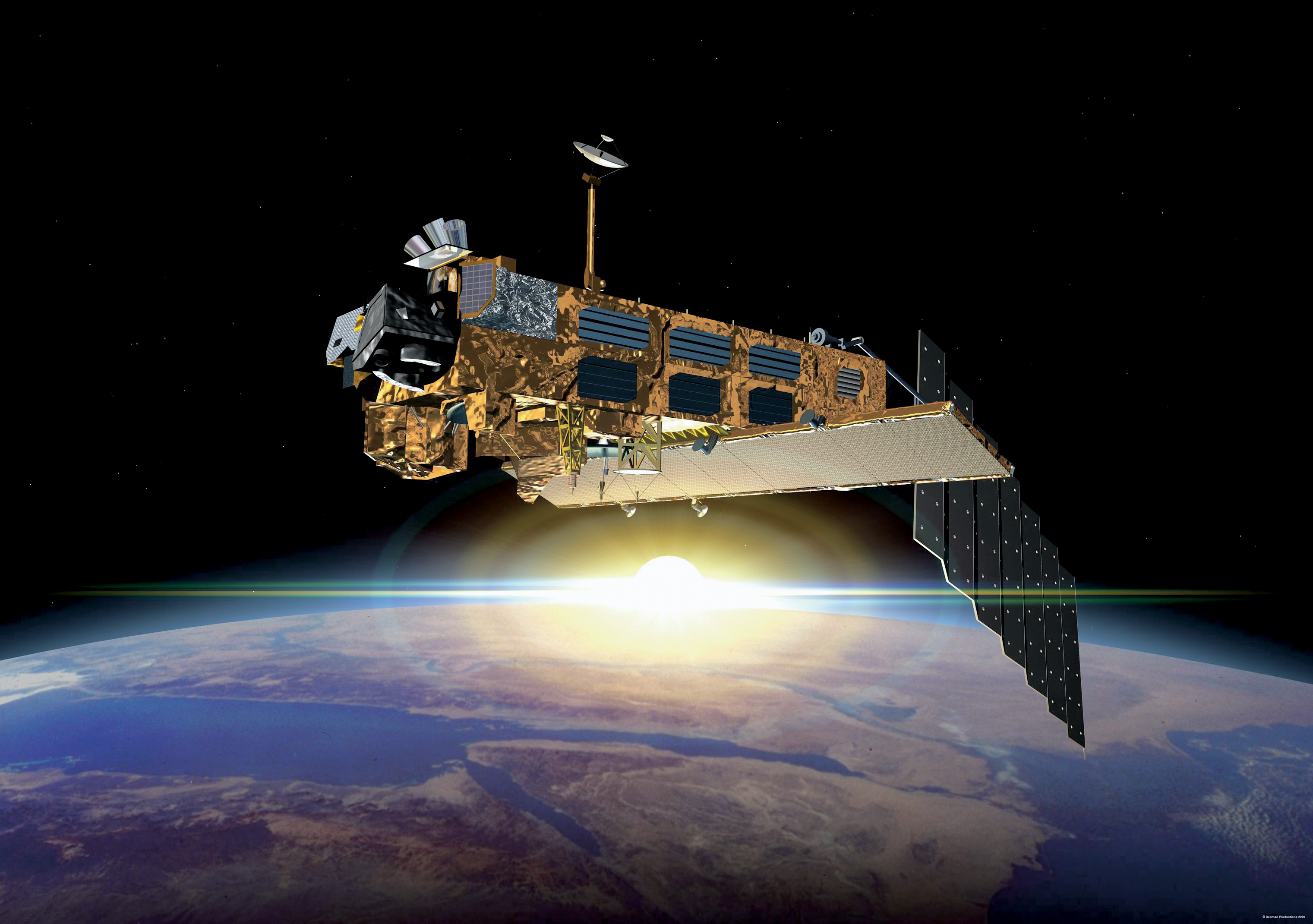A bus-sized satellite that is lost in space could break up and spark a devastating field of debris similar to that which hit Sandra Bullock and George Clooney in the film Gravity. The threat comes from the nine-metre wide Envisat satellite which lost contact with Earth in 2012 and now orbits under at an altitude of 491 miles (790km).Scientists believe there is a chance of collision with other satellites and debris during the 150 years it is expected to remain in space. But bringing the satellite back to Earth may prove too costly.
A satellite which the European Space Agency lost contact with in 2012 could create a similar cloud of space debris which hit the International Space Station in the film ‘Gravity’
Each year, scientists believe two objects pass the 18,000lb satellite by within about 200m and other spacecraft have had to move out of Envisat’s path.
It is possible that a collision with Envisat could lead to a chain reaction effect, known as the Kessler Syndrome, which refers to when a cloud of fast-moving debris causes other collisions.
This is the type of a cloud that hit Bullock and Clooney during a spacewalk outside the International Space Station in the film Gravity.
‘The fact that Envisat is in a near-polar orbit doesn’t help, since its path intersects most satellites’ orbits nearly at right angles,’ said Professor George Fraser, Director of the University’s Space Research Centre.
Envisat was originally designed to snap high-resolution photos of Earth for five years, but managed to last 10 years during its successful mission
WHAT IS ENVISAT?
In March 2002, the European Space Agency launched Envisat, an advanced polar-orbiting Earth observation satellite which provided measurements of the atmosphere, ocean, land, and ice.
The satellite was originally designed to snap high-resolution photos of Earth for five years, but managed to last 10 years during its successful mission.
Envisat lost contact with Earth in 2012 and now orbits under at an altitude of 491 miles (790km). This altitude is where the greatest amount of space debris around the planet is found.
‘Imagine driving down the motorway and every so often a large truck cuts right across all four lanes right in front of you.’
Physics students at Leicester University claim it could make it difficult for future space missions to pass through the region of Envisat’s altitude, if the region becomes congested with space debris.
The fourth-year students’ paper, De-orbiting Envisat, suggests that around 140kg of fuel would be needed to move the satellite to a point where it can naturally return to Earth within 25 years.
The energy required to move the satellite 90km closer to the Earth was 2.7 billion joules – equivalent to an extra 143.1kg of hydrazine fuel, they found.
There are around 22,000 objects in orbit that are big enough for officials on the ground to track and countless more smaller ones that could do damage to human-carrying spaceships and valuable satellites
This could be possible, according to the students, if two of the craft’s 80kg fuel tanks were replaced.
But getting this fuel to the satellite in orbit would be a tall order due to the costs involved of such a mission.
An average satellite launch costs hundreds of millions of pounds– with each kilogram of the satellite’s costing tens of thousands of pounds.
‘In the film, the cloud of space debris is caused by a missile which was supposed to destroy a non-operational satellite and sparks the chain reaction which eventually collides with Clooney and Bullock’s spacecraft. In real life this is very unlikely to happen,’ said physics student Katie Raymer, 22, from Whitstable.
‘Envisat orbits at an altitude where the amount of debris is greatest. So although it is unlikely to happen, de-orbiting Envisat is certainly worth considering.’
It is possible that a collision with Envisat could lead to a chain reaction known as the Kessler Syndrome, which refers to when a cloud of fast-moving debris causes other collisions. This is the type of a cloud that hit Sandra Bullock and George Clooney during a spacewalk outside the International Space Station in the film Gravity





